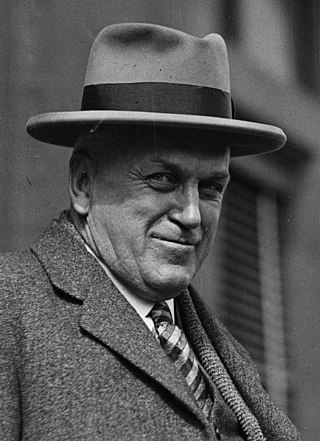Top Qs
Timeline
Chat
Perspective
1929 Queensland state election
From Wikipedia, the free encyclopedia
Remove ads
Elections were held in the Australian state of Queensland on 11 May 1929 to elect the 72 members of the state's Legislative Assembly. In this election, Irene Longman became the first woman to both stand and be elected into the Queensland Parliament.

The Labor government was seeking its sixth continuous term in office since the 1915 election; it would be Premier William McCormack's second election. His main opponent was the Country and Progressive National Party (CPNP), led by Arthur Edward Moore. The term had not gone well for McCormack's government, including a railway lock-out in 1927 which pitted the Labor Party against the union movement, restrictive financial policies and attempts to sell off state-owned enterprises, as well as suggestions of corruption which later came to be known as the Mungana affair.
The election resulted in the defeat of the McCormack government in a landslide, and the first non-Labor ministry since 1915.
Remove ads
Key dates
Remove ads
Results
The election saw the defeat of the Labor government by the CPNP.
|
Queensland state election, 11 May 1929[5] | ||||||
|---|---|---|---|---|---|---|
| Enrolled voters | 491,589[1] | |||||
| Votes cast | 438,248 | Turnout | 89.15% | +0.42 | ||
| Informal votes | 6,836 | Informal | 1.56% | +0.33 | ||
| Summary of votes by party | ||||||
| Party | Primary votes | % | Swing | Seats | Change | |
| CPNP | 233,977 | 54.23% | +5.03 | 43 | +15 | |
| Labor | 173,242 | 40.16% | –7.80 | 27 | –16 | |
| Communist | 2,890 | 0.67% | +0.67 | 0 | ± 0 | |
| Independent | 21,303 | 4.94% | +3.33 | 2 | + 1 | |
| Total | 431,412 | 72 | ||||
- 1 517,466 electors were enrolled to vote at the election, but 4 seats (5.6% of the total) were uncontested—2 Labor seats (3 less than 1926) representing 9,041 enrolled voters and two CPNP seats (one more than 1926) representing 16,536 enrolled voters.
Remove ads
Seats changing party representation
Summarize
Perspective
This table lists changes in party representation at the 1929 election.
Remove ads
Post-election pendulum
Summarize
Perspective
Note: from 1892 until 1942, Queensland used contingency voting, which was similar to the modern optional preferential voting system. In electorates with 3 or more candidates, preferences were not distributed if a candidate received more than 50% of the primary vote.
Remove ads
Aftermath
The CPNP found itself in power as the Great Depression took hold. It lost power after one term.
See also
References
Wikiwand - on
Seamless Wikipedia browsing. On steroids.
Remove ads


